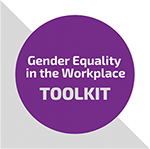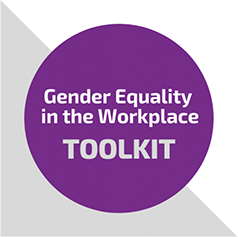Key Terms and References
Key
Terms
Bystander
A bystander is anybody who is not directly involved as a victim or perpetrator in an incident, but who observes or learns about an act of violence, discrimination or other problematic behaviour. In the context of preventing violence against women a bystander is anybody who observes or learns about attitudes, behaviours, norms, policies and structures that contribute to or perpetuate violence against women (the gendered drivers). An active bystander takes action to challenge sexist, violence or discriminatory behaviours and attitudes, whilst a passive bystander does not act or intervene.
Bystander action
Bystander action refers to the action taken by a bystander, to identify, speak out about or engage others in responding to incidences of violence, sexism, harassment or discrimination and/or attitudes, behaviours, norms, polices and structures that contribute to or perpetuate violence against women.
In the primary prevention context, when we talk about bystander action we are not talking about physically intervening in response to an observed incident. Examples of bystander actions include calling out disrespectful language or behaviour, changing the topic, eye rolling, enlisting support, referring to organisational policies, or changing discriminatory workplace policies and practices. These actions can be taken in the moment or after the moment.
Early intervention/secondary prevention
Early intervention, sometimes called secondary prevention, involves working with individuals or groups identified as being at a higher than average risk of perpetrating or experiencing violence. Early intervention aims to stop the early signs of violence escalating and prevent the reoccurrence of violence to reduce harm in the longer term.
Evidence/evidence-based
The term evidence-based is often used in policy and programming and refers to approaches and practices found to be effective according to the evidence base. Evidence, refers to published information, including academic research as well as organisational reports, program evaluations, policy papers and submissions.
There is a strong evidence base for the prevention of violence against women in Victoria, and this continues to emerge and evolve. As our understanding of what drives violence against women in different population groups and settings increases, the evidence base will continue to grow.
Family violence
Family violence is abusive or controlling behaviour towards a family member, ordinarily as a part of a pattern of behaviour that controls or dominates that person and causes them to fear for their own or others’ safety and wellbeing. This broad definition includes violence between current or former intimate partners, as well violence between biological family members, extended family, in-laws. (Family Violence Protection Act (VIC) 2008)
WHISE recognises the gendered nature of this violence, with men predominantly being the perpetrators of this violence, and women predominantly being the victims of this violence.
Gender audit
A gender audit (also known as a workplace gender audit) is a process which assesses the extent to which gender inequality is institutionalised in organisational processes, practices, policies and structures. It supports organisations to assess their current activity, to identify critical gaps and capacity for change around creating a more gender equitable organisation. It can also be used as a guide for planning and prioritising actions and establishing a baseline which enables organisations to measure changes over time.
Gender based violence
Gender based violence is violence used against someone because of their gender. It describes violence rooted in gender based power inequalities and gender based discrimination. While people of all genders can experience gender based violence, the term is most often used to describe violence against women and girls. In the context of preventing violence against women, the term gender based violence is sometimes used interchangeably with violence against women.
Gendered drivers of violence
Gender inequality, that is the gender discriminatory institutional, social and economic structures, social and cultural norms, and organisational, community, family and relationship practices, is the underlying driver of all gendered violence.
There are four specific expressions of gender inequality, which have been most consistently associated
with higher levels of violence against women:
- Condoning of violence against women
- Men’s control of decision-making and limits to women’s independence
- Rigid gender roles and identities
- Male peer relations that emphasise aggression and disrespect towards women. (OurWatch,
Change the Story)
Gender equality
Gender equality is the outcome reached through addressing gender inequities. It is the equal rights, responsibilities, and opportunities of all people regardless of their gender or sex. Gender equality does not mean erasing gender differences, but that people’s rights, responsibilities, and opportunities are not dependent on their gender.
Under the Gender Equality Act (2020) “Gender equality means equality of rights, opportunities, responsibilities and outcomes under between persons of different genders.”
Gender Equality Action Plan (GEAP)
A Gender Equality Action Plan (GEAP) is a report or document that offers an understanding of the barriers to diversity and inclusion and uses this understanding to introduce meaningful actions to address gender inequities for staff. A GEAP seeks to address the additive effect of gender intersecting with other inequities and the impact this has on staff development, career progression and job satisfaction. A GEAP serves as a driving force to promote gender equity in the workplace.
Gender equity
This refers to the equal rights, responsibilities and opportunities of women and men and girls and boys. Equality does not mean that women and men will become the same but that women’s and men’s rights, responsibilities and opportunities will not depend on whether they are born male or female. (UN Women, Gender Equality Glossary)
Gender inequality
Gender inequality is the unequal distribution of power, resources and opportunities between men, women, trans, gender diverse and intersex people.
Gender inequality results from a range of things, including laws and policies which constrain people of different genders rights and opportunities, and is reinforced through more informal norms, practices and structures.
Gender responsive
To be gender responsive, an organisation has mainstreamed gender equity and prevention of violence against women initiatives, so that all policies, procedures and internal documents align with the principles of gender equity.
Gender stereotypes
Gender stereotypes are simplistic assumptions and generalisations about the attributes, skills, behaviours, preferences and roles that people should have or demonstrate based on their gender. These attributes are often perceived as natural or innate, but are actually the result of people of different genders being socialised in different ways. Gender stereotypes are not necessarily negative assumptions or generalisations.
Intersectionality
Intersectionality describes the complex ways that different identities overlap and intersect with structures and systems of power and oppression. Different kinds of structural inequality – for example, as a result of racism, ageism, colonisation and dispossession, ableism, on the basis of sexual orientation or gender identity – are experienced differently when put together. Intersectionality offers an important critique of systems and structures of power and how these interact with identity.
Intimate partner violence
Intimate partner violence is abusive or controlling behaviour towards a former or current partner, ordinarily as a part of a pattern of behaviour that controls or dominates that person and causes them to fear for their own or others’ safety and wellbeing. (Family Violence Protection Act (VIC) 2008). This definition only extends to those who are in an intimate relationship.
Prevention of violence against women (PVAW)
WHISE adopts the OurWatch definition of a primary prevention approach towards the prevention of violence against women, which requires:
Changing the social conditions, such as gender inequality, that excuse, justify or even promote violence against women and their children. Individual behaviour change may be the intended result of prevention activity, but such change cannot be achieved prior to, or in isolation from, a broader change in the underlying drivers of such violence across communities, organisations and society as a whole. A primary prevention approach works across the whole population to address the attitudes, practices and power differentials that drive violence against women and their children.
Primary Prevention
Primary prevention initiatives aim to change the underlying cause of poor health, engaging whole-of-population to achieve cultural change by targeting norms, practices and structures which create complex, interdependent social systems in which we live, work and play. (Victorian Health, Violence against women in Australia. An overview of research and approaches to primary prevention).
Response / tertiary prevention
Response is the term most commonly used to describe work that addresses violence once it has happened. This work is usually undertaken by specialist family violence or sexual assault services to support victim survivors and/or hold perpetrators to account. It is also sometimes called tertiary prevention, as it aims to prevent violence from recurring or escalating.
Sex and/or gender discrimination
Sex and/or gender discrimination is the term used to describe when a person is not given the same opportunities, or is treated less favourably than another in a similar situation due to their sex and/or gender. Sex and gender identity are protected attributes and in Victoria discrimination on the basis of sex and/or gender is against the law. Within Victorian legislation there is a positive duty on organisations to actively prevent sex and gender discrimination.
Social norms, practices, and structures
Social norms are the socially accepted and expected rules of conduct and models of behaviour. For example, the belief that women should be the primary carers of children. Practices are the specific behaviours or actions that reinforce these social norms such as women in a heterosexual relationship undertaking the majority of unpaid caring work. Finally, structures are the laws and systems that organise society and shape norms and practices in particular ways. For example, parental leave policies/schemes and pay differences between male and female dominated professions.
Gender inequality is reinforced through gender norms, practices and structures that occur or operate across different levels of the social ecology.
Southern Metropolitan Region
The Southern Metropolitan Region (SMR) covers 10 local government areas from South Melbourne, down to the Mornington Peninsula and east to Casey and Cardinia. The SMR cover 2,888 square kilometers with approximated 1.3 million people, representing about one-quarter of the state’s total population. (WHISE, Environmental Scan).
Acknowledgement of the evidence base
This Toolkit has been built on the significant body of work by Our Watch. WHISE and the Preventing Violence Together partners wish to acknowledge the significant body of work, and the legacy of Our Watch in preventing violence against women and their children.
This toolkit specifically draws from two key pieces of knowledge from Our Watch:
- Change the Story - © Our Watch Limited 2019
- Workplace Equality and Respect Standards - © Our Watch Limited 2019
References
- Our Watch, Australia’s National Research Organisation for Women’s Safety (ANROWS) and VicHealth (2015) Change the story: A shared framework for the primary prevention of violence against women and their children in Australia, Our Watch, Melbourne, Australia
- Our Watch, Workplace Equality Respect Standards (NOT YET RELEASED)
- UN Women, OSAGI Gender Mainstreaming - Concepts and definitions; Committee on the Elimination of Discrimination against Women (2010), General recommendation No. 28 on the core obligations of States parties under article 2 of the Convention on the Elimination of All Forms of Discrimination against Women
- Family Violence Protection Act 2008 (VIC)
- Victorian Health Promotion Foundation, Violence against women in Australia. An overview of research and approaches to primary prevention, Melbourne, Australia (2017)
- WHISE, Environmental Scan, 'Our Region' 2018

